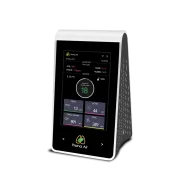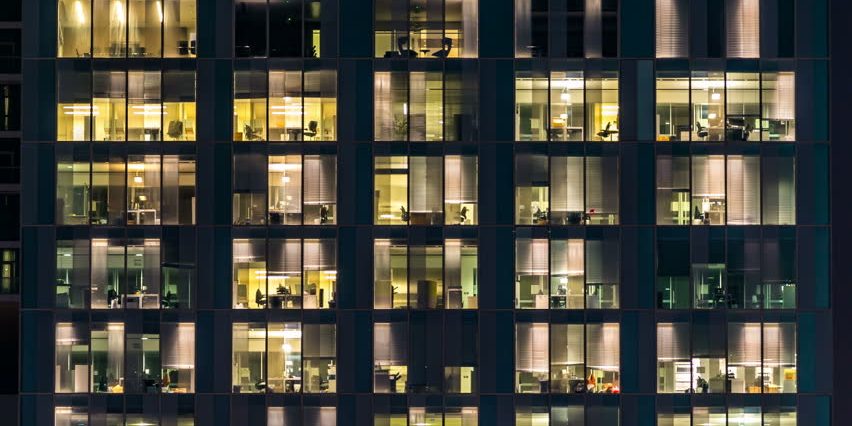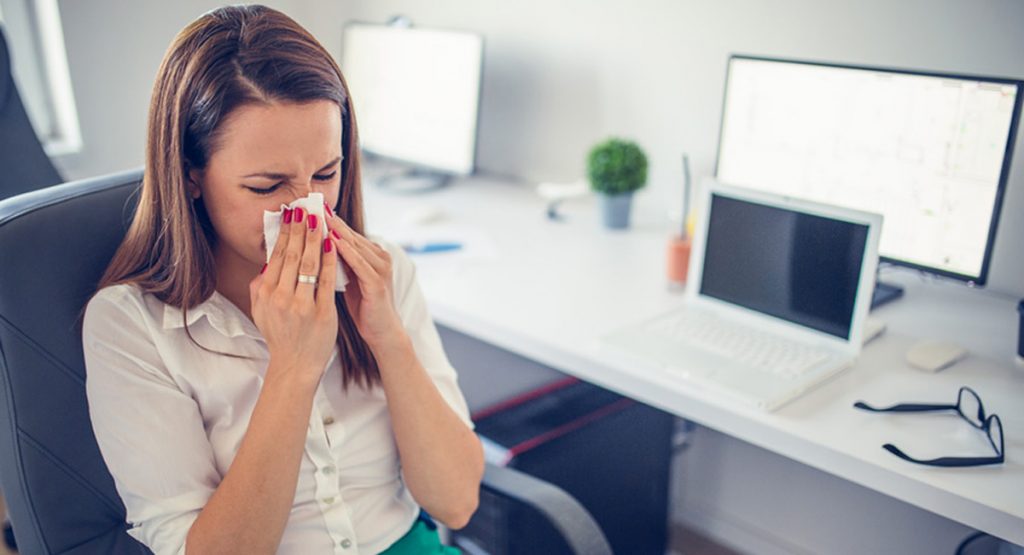Sick building syndrome (SBS) describes a situation when the inhabitants of a building report various symptoms of illness, but these symptoms lessen when they spend time away from the building.
Usually, the symptoms of sick building syndrome are headaches, feeling tired, unable to concentrate, nausea, irritation of the eyes, throat, or nose irritation; skin is itchy or dry and coughing.
Combat Sick Building Syndrome
The ventilation system should deliver an air of suitable quality and in sufficient quantity to
- Create and maintain a healthy and comfortable environment, i.e. provide fresh air;
- Dilute and remove airborne impurities and pollutants, e.g. odors, tobacco smoke, fumes, and dust;
- Create and maintain a comfortable temperature and humidity;
- Prevent stagnation and draughts.
Check the temperature
- Failure to control the workplace temperature is unlikely by itself to cause Sick Building Syndrome. But excessive temperatures and wide variations in temperature can influence other factors by, for instance, increasing the possibility of exposure to airborne pollutants.
Bring the Humidity to a reasonable level
- As with temperature, humidity on its own is unlikely to be a cause of Sick Building Syndrome. Unreasonable humidity levels in combination with other factors can, however, exacerbate problems. For example, high humidity encourages the growth of harmful bacteria; low humidity contributes to a dusty atmosphere and to dry eyes, nose, throat, and skin.
- In offices, it is generally considered in the interests of worker efficiency that humidity be maintained in the range of 40% to 70%. In warm offices, the relative humidity should be at the lower end of this range. Controls should be checked frequently. The checks should also cover the operation and cleanliness of the humidifying equipment.
Other ways to fight sick building syndrome
Proper Lighting
- To combat sick building syndrome, there must be proper lighting in the offices and indoors wherever possible.
- The design of the indoors must give control to the individual to utilize natural light
- Avoid glare, flicker, and noise
- The area must be clean and defective units should be replaced promptly
- One of the important things for proper lighting is that it must be appropriate for the work, in particular for work with display screen equipment.
Deep Cleaning including furnishing
- Cleaning can be a major factor in preventing Sick Building Syndrome. Cleaning patterns for particular areas should be set according to individual circumstances but the following frequencies of cleaning operations are suggested as a guide:
- Wet areas of the plant including cooling coils and humidifiers (annually);
- Ventilation systems including grills and vents (annually);
- Windows and light fittings (monthly/3 monthly);
- Internal surfaces, office/home carpeting, furnishings and furniture including desks and chairs (daily), and deep cleaning of soft furnishings (annually).
One can also get an air purifier for the indoors and experience fresh clean air that also cleanses the environment increasing the productivity of the inmates.
We hope you liked this article. To learn more information regarding air pollution and how to fight against it, visit www.pranaair.com
Also Read: 5 SIGNS THAT TELL POOR HOME AIR QUALITY










